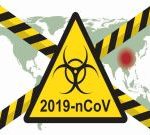Coronavirus is most infectious when patients are at the peak of their illness, U.S. health officials said Friday.
“Based on what we know now, we believe this virus spreads mainly from person to person among close contacts, which is defined as about six feet, through respiratory droplets produced when an infected person coughs or sneezes,” Dr. Nancy Messonnier, director of the National Center for Immunization and Respiratory Diseases, said during a media briefing on Friday.
“People are thought to be the most contagious when they are most symptomatic, that is when they are the sickest,” she added.
“Some spread may happen by touching contaminated surfaces and then touching the eyes, nose and mouth,” she added. “But remember, we believe this virus does not last long on surfaces. Some spread may happen before people show symptoms. There have been a few reports of this with the new coronavirus, and it is compatible with what we know about other respiratory viruses, including seasonal flu. But right now, we don’t believe these last two forms of transmission are the main driver of spread.”
Messonnier also noted that the U.S. Centers for Disease Control and Prevention has launched a new strategy aimed at stemming any potential spread of coronavirus within the United States.
The “CDC has begun working with five public health labs across the U.S. to tap into their ability to conduct community-based influenza surveillance, so we can begin testing people with flu-like symptoms for novel coronavirus,” she said.
“This is an extra layer of our response that will help us detect if and when this virus is spreading in the community,” she said, explaining that samples of flu-like illness that test negative for influenza will then be tested for coronavirus.
As U.S. health officials devised ways to try to stop the spread of coronavirus in this country, Chinese health officials said Friday that coronavirus cases in that country continued to climb, reaching nearly 64,000, with a death count is approaching 1,400.
For the first time, the number of medical workers who have been infected with the virus was reported Friday, with 1,700 confirmed illnesses and six deaths, The New York Times reported.
“This is concerning and consistent with what CDC knows from our experience with SARS and MERS, where we saw that transmission can be amplified in health care settings if infection control practices are not carefully followed,” Messonnier said.
Meanwhile, two new cases were confirmed in the United States this week, upping the total from 13 to 15.
Both of the new cases involved patients who were among the hundreds of American evacuees from China’s Hubei province, the epicenter of the outbreak.
The latest case, announced Thursday, “is among a group of people under a federal quarantine order at JBSA-Lackland in Texas because of their recent return to the U.S. on a State Department-chartered flight that arrived on February 7, 2020,” the CDC said in a statement.
“The individual is currently isolated and receiving medical care at a designated hospital nearby,” the agency said.
The CDC added that testing of all evacuees is still underway, and “there will likely be additional cases [identified] in the coming days and weeks.”
“While 195 people were discharged from quarantine yesterday, more than 600 people who returned on chartered flights from Wuhan remain under federal quarantine,” the agency noted.
Things are even worse for Americans on board a cruise ship named the Diamond Princess, which is now quarantined in the Japanese port of Yokohama. Forty-four new cases were reported there on Thursday, the Associated Press said. There have now been 218 cases reported among those on the ship, and at least 23 of those are American patients.
“CDC staff are working with State Department and embassy in Japan to figure out a plan for Americans who are eventually released from the Diamond Princess,” Messonnier said. “We are concerned that the data coming out of Japan suggests there’s a higher risk among the people on the ship, and therefore their safety is of utmost importance.”
Just last week, a 60-year-old man living in Wuhan, China, became the first American citizen to die from the new coronavirus.
The man, whose name has not been disclosed, died last week at Jinyintian Hospital in Wuhan, the U.S. Embassy in China said Saturday.
Earlier this month, the United States began to bar entry to any foreigners who have recently traveled to China. U.S. citizens who have recently traveled to the Hubei province of China, where Wuhan, the epicenter of the outbreak, is located, will be quarantined for up to 14 days, U.S. health officials said. U.S. citizens who have recently traveled to other parts of China will face health screenings and voluntary quarantines of up to 14 days.
The temporary entry ban applies to foreign nationals, with the exception of relatives of citizens and permanent residents.
The WHO has already declared the new coronavirus outbreak an international public health emergency.
Experts fear the outbreak could become a pandemic, where there are outbreaks on more than one continent.
More information
The U.S. Centers for Disease Control and Prevention has more on the new coronavirus.
Copyright © 2025 HealthDay. All rights reserved.



-300x169.jpg)












